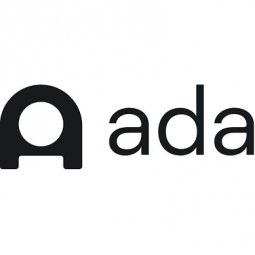Download PDF
AirAsia Enhances Customer Experience with AI-Powered Chatbot
Technology Category
- Platform as a Service (PaaS) - Application Development Platforms
Applicable Industries
- Aerospace
- Cement
Applicable Functions
- Quality Assurance
- Sales & Marketing
Use Cases
- Chatbots
- Time Sensitive Networking
Services
- Testing & Certification
- Training
The Challenge
AirAsia, a global leader in customer experience in the travel industry, was facing challenges in maintaining its high-quality customer service due to rapidly increasing passenger numbers. Despite having over 3.3 million active users on their app, the lack of a self-service solution meant that customers were required to engage a live agent for support, leading to an average wait time of 45 minutes. This was particularly problematic for time-sensitive and urgent inquiries. Additionally, the reliance on voice-based call center teams that operated within local hours and languages made it difficult for AirAsia to support its international client base, create new connections, and drive new sales.
About The Customer
AirAsia is a global leader in the travel industry, known for its exceptional customer experience. It has been crowned the world’s best low-cost carrier 11 years running by Skytrax. AirAsia carries more than 100 million guests every year to over 140 destinations and has plans for significant growth. The airline has a strong digital presence with more than 3.3 million active users on its app. However, as the passenger numbers quickly scaled, AirAsia was facing challenges in maintaining its high-quality customer service and supporting its international client base.
The Solution
To address these challenges, AirAsia partnered with Ada to build and launch a 24/7 multilingual chatbot. This chatbot was integrated into AirAsia's website and app, providing instant support to customers. The chatbot was connected with the business' back-end, enabling customers to check flight updates, book flights, answer key questions about the AirAsia experience, update passenger information, and add ancillary products to bookings without the need for a live agent. The chatbot was launched in less than a month and was able to reduce the volume of customer inquiries and decrease the average wait time to less than one minute. AirAsia also introduced additional channels including Facebook Messenger and WeChat for customer support.
Operational Impact
Quantitative Benefit
Related Case Studies.

Case Study
System 800xA at Indian Cement Plants
Chettinad Cement recognized that further efficiencies could be achieved in its cement manufacturing process. It looked to investing in comprehensive operational and control technologies to manage and derive productivity and energy efficiency gains from the assets on Line 2, their second plant in India.

Case Study
Airbus Soars with Wearable Technology
Building an Airbus aircraft involves complex manufacturing processes consisting of thousands of moving parts. Speed and accuracy are critical to business and competitive advantage. Improvements in both would have high impact on Airbus’ bottom line. Airbus wanted to help operators reduce the complexity of assembling cabin seats and decrease the time required to complete this task.

Case Study
Aircraft Predictive Maintenance and Workflow Optimization
First, aircraft manufacturer have trouble monitoring the health of aircraft systems with health prognostics and deliver predictive maintenance insights. Second, aircraft manufacturer wants a solution that can provide an in-context advisory and align job assignments to match technician experience and expertise.

Case Study
Aerospace & Defense Case Study Airbus
For the development of its new wide-body aircraft, Airbus needed to ensure quality and consistency across all internal and external stakeholders. Airbus had many challenges including a very aggressive development schedule and the need to ramp up production quickly to satisfy their delivery commitments. The lack of communication extended design time and introduced errors that drove up costs.

Case Study
Developing Smart Tools for the Airbus Factory
Manufacturing and assembly of aircraft, which involves tens of thousands of steps that must be followed by the operators, and a single mistake in the process could cost hundreds of thousands of dollars to fix, makes the room for error very small.






